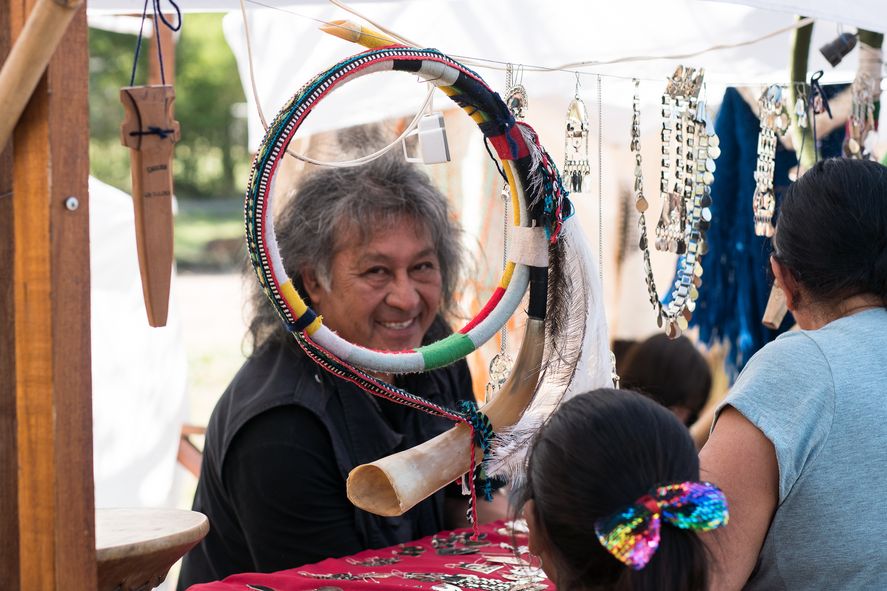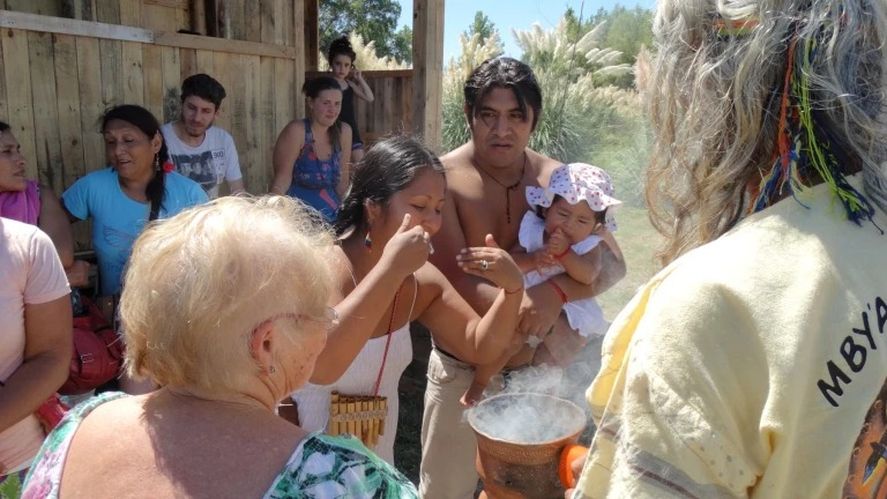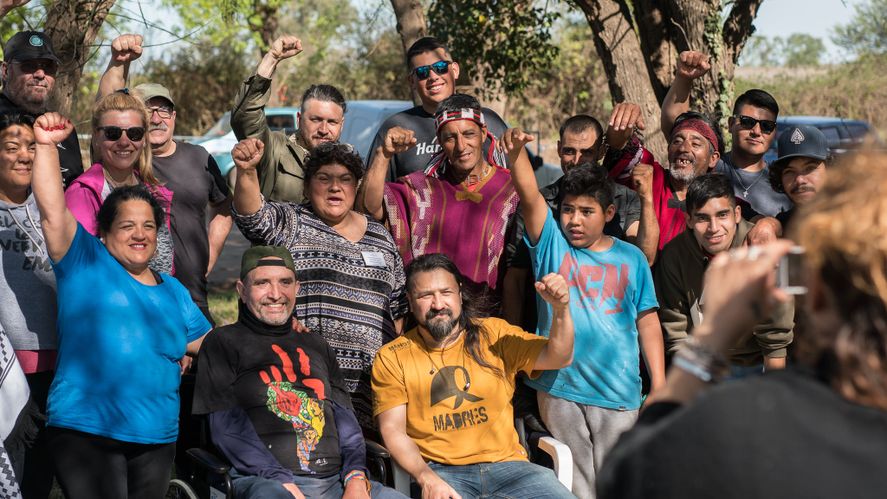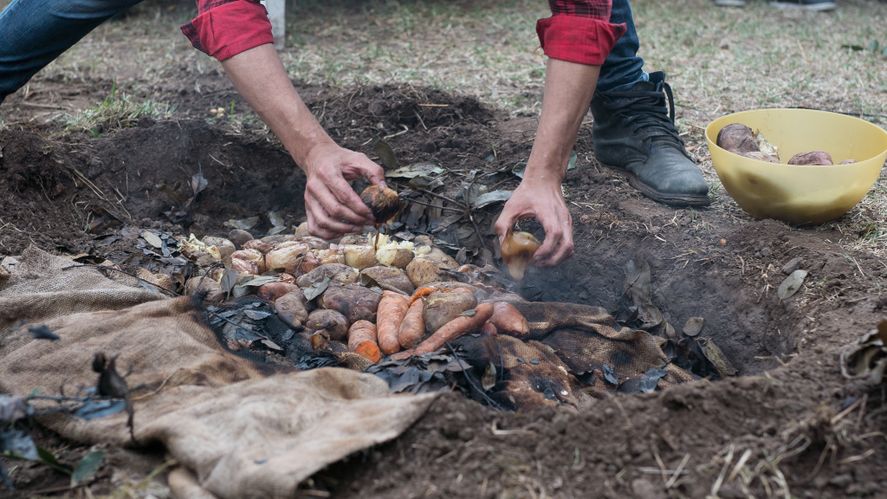“It took us many years to obtain legal status, when we organized it was different, we got the land, we built our homes. We are about 500 people, we are in a hectare that covers about 38 brick houses with double walls, thermal insulation, tongue and groove. We did everything ourselves”, tells proudly.
The man remembers that until about 70 years ago the town lived by collecting fruits and hunting, as well as agriculture, something that changed radically in the city and over time.
“Now we search for odd jobs, there are people who were able to study and today live from their profession: we have librarians, engineers, lawyers, but they are few, most fall into odd jobs due to lack of education and lack of work leads them to that “, held.
Regarding the relationship with the neighbors, Rogelio notes that many people outside the community recognize them and are interested in consulting them, while others are indifferent or directly do not coincide with their culture. “There’s everything,” he says.
“We speak the original language, but we are not alone in the mountains, we live in hyper-connectivity, everything has changed and we have to adapt to the system,” hill.
Bahía Blanca: attack, threats and usurpation against Mapuches
Olga Curipanis the leader and most visible face of the Ruka Kimun Mapuche community of Bahía Blanca, also the victim of an attempt on her life, one of the many that took place in the large city in southern Buenos Aires.
As a community they began to work actively about 40 years ago, but they were present long before, only in silence. “The process is still complex, it is something that happens to all of us”, Olga assured Infocielo.
“Now, over the years, we have lost our innocence. We did an accompaniment job and we never paid much attention to what evil was around us, we were shaken by the terrorist attack but then we saw that we were always in danger: threats, phone calls, attacks, but since we were so involved in defending our territorial identity We don’t notice it,” he said.
Curipán assured that there are historical records that indicate that Bahía Blanca is a territory whose first foundation was from native communities.
“It was always indigenous territory, we pre-exist the State. It was always a disputed space, but we also always moved in the field of respect, it is our motto, beyond the resistance of young people we believe that everything happens through dialogue and respect”, Olga sentenced.
Although some political views describe the Mapuche people as “usurpers”, in Bahía Blanca they are the ones who have occupied land. “They are not vulnerable people, it is a bid for power because anyone is removed to the second if they occupy a place and nothing has happened here,” ensures.
For the community – made up of about 600 people – this is sacred ground, because it was an indigenous cemetery, and according to their worldview “something tremendous can happen in that place because blood calls to blood.”
Los Toldos, the legacy of Cacique Coliqueo
From General Viamonte, Cynthia Zabaletaa benchmark for the Mapuche community of Los Toldos in which some 25 families are grouped, highlights interculturality above many factors: “We are not closed, we all learn from everyone,” he assures Infocielo.
The Mapuches of the Buenos Aires center work in a space that was donated to them in 2012 by the Municipality, where they carry out cultural workshops related to their own history such as loom, languages, in addition to holding four ceremonies a year, to close in December with the “Kawiñ Mapuche” festival, which brings together many people.
The Mapuche of Los Toldos they are descendants of the cacique Coliqueowho arrived in 1862 and settled in what is now La Azotea lagoon, a space that was later donated by former president Bartolomé Miter to the community.
“We are working and focusing on the Mapuche cemetery, to try to protect it and have it declared a protected area and cultural heritage, because there are people who do not have that respect,” Cynthia marked.
The woman recalled that in 2017 the remains were found when they were making a path, then the process began. Later, the Municipality signed an agreement with archaeologists to legally delimit it, but without excavating it. “Work is being done on it and we hope that progress can be made soon, it is very important to us, it is a sacred site,” she said.
Punta Querandí, communities between nature and the countries
At the mouth of the Arroyo Garín in the Villanueva Canal, district of Tigre, is located the community, ancestral, sacred and educational territory of the native peoples called “Punta Querandi”a space of one hectare that preserves thousand-year-old indigenous archaeological remains.
It is located in an area that they call “ancestral burial sites that are being destroyed by the construction of mega-projects in private neighborhoods.” For more than a decade, this place has been protected by the families of native peoples who develop their cultures there through educational workshops open to the entire society.
Santiagoa leader of the Qom community of Tigre assured this outlet that there are several families that reside in the area, but not always the same ones, and in addition to the Qom community there are also Kolla, Guaraní, Querandí and Mocoví families.
“It was complicated because we had to coordinate between the municipality and the real estate agency, but we managed it,” celebrated Santiago, who stressed that “The neighbors are always in communication with us, because they also suffer the consequences of the confinement of the countries.”
This is how the native peoples of Buenos Aires live and think




